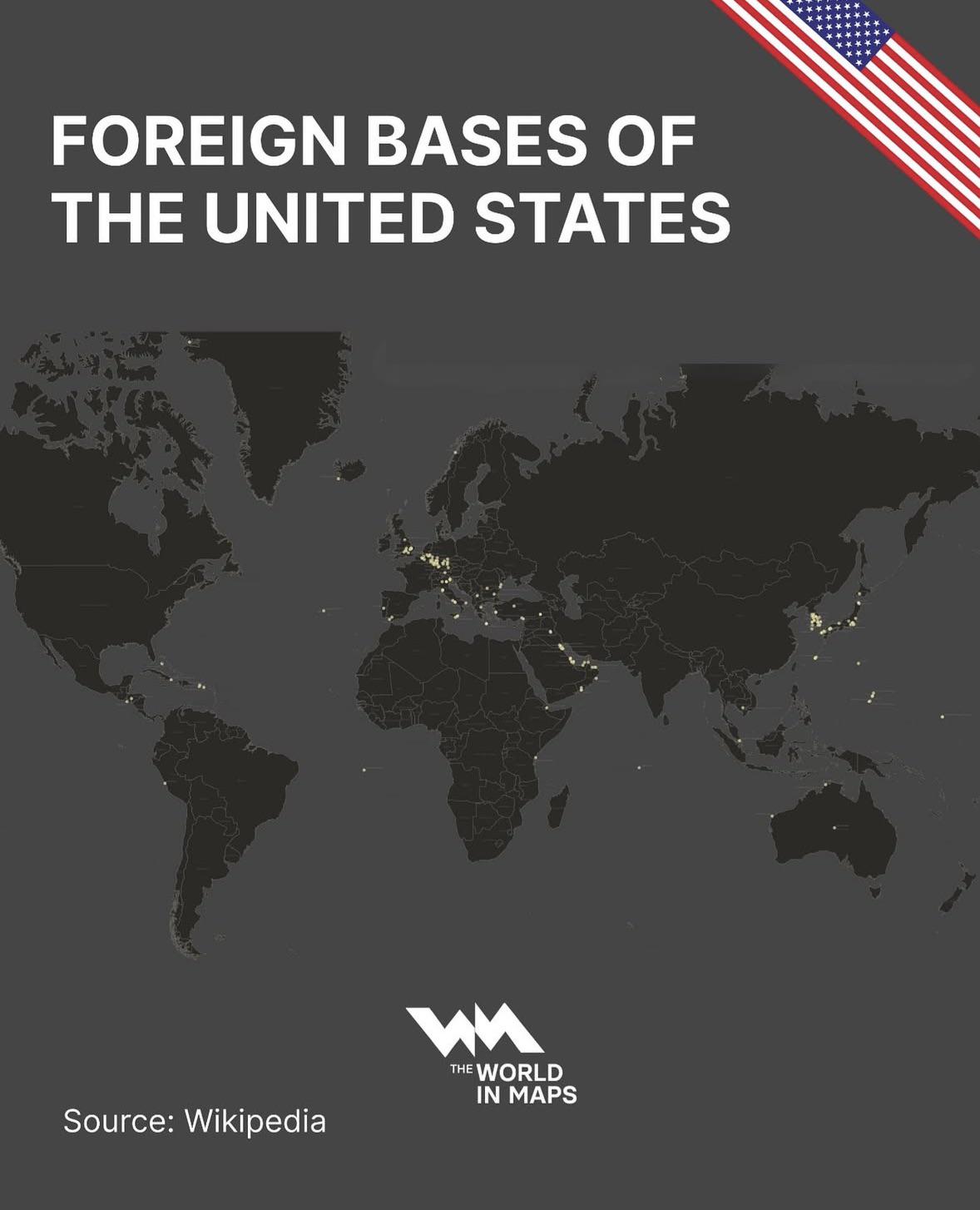Foreign Bases of the United States Map


David Chen
Data Visualization Specialist
David Chen is an expert in transforming complex geographic datasets into compelling visual narratives. He combines his background in computer science ...
Geographic Analysis
What This Map Shows
The "Foreign Bases of the United States Map" visually represents the locations of U.S. military bases around the globe. These bases serve various strategic military functions, ranging from logistical support and training to direct operational capabilities in different regions. By observing this map, one can quickly grasp the extensive reach of the U.S. military and its global commitments.
Deep Dive into U.S. Military Bases
The establishment of U.S. military bases abroad has a complex history, rooted in both the aftermath of World War II and the Cold War. Today, the United States operates approximately 800 military bases in more than 70 countries. These bases vary significantly in size, function, and purpose, ranging from large installations capable of housing thousands of personnel to smaller outposts focused on specialized operations.
What's fascinating is that these bases not only serve military purposes but also influence international relations and local economies in host nations. For example, the presence of bases often leads to increased trade and tourism, providing a substantial economic boost to local communities. However, the geopolitical implications can be complex, as some nations view these bases as symbols of foreign influence or intervention, leading to tensions.
Moreover, the strategic locations of these bases are often dictated by historical conflicts, regional partnerships, and current security needs. For instance, U.S. bases in Europe, such as those in Germany and the United Kingdom, serve as crucial points for NATO operations and ensure rapid response capabilities in Eastern Europe, particularly in light of recent tensions with Russia. Meanwhile, bases in the Asia-Pacific region, such as those in Japan and South Korea, are essential for counterbalancing China's rising influence and maintaining stability in the Korean Peninsula.
Another key aspect to consider is the evolution of these bases in response to modern warfare. The rise of cyber threats and asymmetric warfare has led to a rethinking of how military resources are deployed. This means that many bases are now focused on intelligence sharing and counterterrorism operations, rather than traditional warfare. Interestingly, the U.S. has also established a number of drone bases in regions like the Middle East and Africa, showcasing a shift towards more remote military strategies.
Regional Analysis
When analyzing the foreign bases of the United States, it’s essential to look at them through a regional lens. In Europe, the U.S. maintains a significant presence, with over 100 bases primarily in Germany, Italy, and the UK. These installations are not only a legacy of World War II but also a strategic necessity in the context of NATO’s collective defense strategy.
In Asia, the situation is somewhat different. Countries like Japan and South Korea host several bases that play a crucial role in maintaining regional stability amid threats from North Korea and China. Interestingly, the U.S. has also begun to strengthen its military ties with India, leading to discussions about potential bases or logistics agreements in the Indo-Pacific region.
In the Middle East, the presence of U.S. bases has fluctuated with varying political climates. Countries like Kuwait and Qatar host significant bases that serve as logistical hubs for operations in Iraq and Afghanistan. However, the withdrawal from Afghanistan has prompted a reevaluation of military footprints in the region. In Africa, U.S. bases are smaller and often focused on counterterrorism efforts, with particular attention given to regions afflicted by instability and extremist groups.
Significance and Impact
Understanding the distribution of U.S. military bases worldwide is crucial for grasping contemporary international relations and military strategy. The implications of these bases extend beyond military readiness; they influence diplomatic relations, economic conditions, and even cultural exchanges between the U.S. and host countries.
As global dynamics shift, the future of U.S. military bases may also change. With discussions around reducing foreign military presence and increasing partnerships with local forces, the role of these bases could evolve significantly. Additionally, the rise of new global threats, such as cyber warfare and climate change, may lead to new strategies for military engagement, impacting where and how the U.S. maintains its presence abroad.
In conclusion, the "Foreign Bases of the United States Map" is more than just a geographical representation; it is a reflection of the United States' military strategy, geopolitical interests, and its relationship with the world. Understanding this map provides valuable insights into the complexities of international relations in the contemporary era.
Visualization Details
- Published
- October 6, 2025
- Views
- 38
Comments
Loading comments...